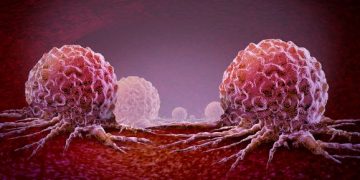Glioblastoma prognosis is the chance that you will survive after being diagnosed with a brain tumor. It is based on the type of tumor you have, how big it is and other factors that can impact survival. Your doctor can tell you more about your glioblastoma prognosis after completing special tests on the cancer cells that are found in your brain.
Glioblastomas are the most common type of brain tumor in adults. They are usually found in the frontal lobe and/or temporal lobe of the brain. The frontal lobe is near the forehead and plays an important role in memory, voluntary movement and behavior. The temporal lobe is toward the bottom of the brain and processes information from the senses like hearing, sight and touch. Glioblastomas can also form in other parts of the brain.
It’s not yet known what causes glioblastoma, but it generally affects people older than age 45. People with a family history of this type of brain cancer have a double the risk of developing it themselves. Having been exposed to radiation for other medical treatments also increases your risk for this type of brain tumor.
The diagnosis of a glioblastoma normally begins with a neurological exam and imaging tests such as an MRI. The MRI helps your doctor find the location and size of the tumor. Then, a biopsy is done, where the health care team removes a small sample of the tissue for testing. This can help your health care team decide the best treatment plan for you.

Your health care team may recommend surgery to remove as much of the glioblastoma as possible. A brain surgeon, or neurosurgeon, works to remove the tumor as well as healthy brain tissue around it. However, because a glioblastoma grows into the surrounding brain tissue, it’s likely that some cancer cells will be left behind. To get to these remaining cancer cells, most people have radiation therapy and chemotherapy after surgery. You might receive daily doses of the drug temozolomide (Temodar) alongside the radiation. This medication makes your cancer cells more sensitive to the radiation.
These treatments do not cure glioblastoma, but they can control the growth of the cancer and reduce symptoms such as headaches, seizures, weakness on one side of the body or difficulty thinking and speaking. They can even prolong your life for a few years after your first diagnosis.
While glioblastoma is the most aggressive type of brain cancer, doctors and researchers continue to work hard to improve glioblastoma prognosis for patients. Some patients have survived 5, 10, and even 20 years after their initial diagnosis. Factors that affect survival include: age, sex (male vs female), pre-operative PS (0-2 vs 3-4), tumor grade (lower-grade astrocytic vs anaplastic), extent of surgical resection, radiotherapy modality (HDT vs CRT) and the presence of favorable tumor genetics such as MGMT promoter methylation or IDH mutations. This is why it is so important to discuss your options with your health care team.









